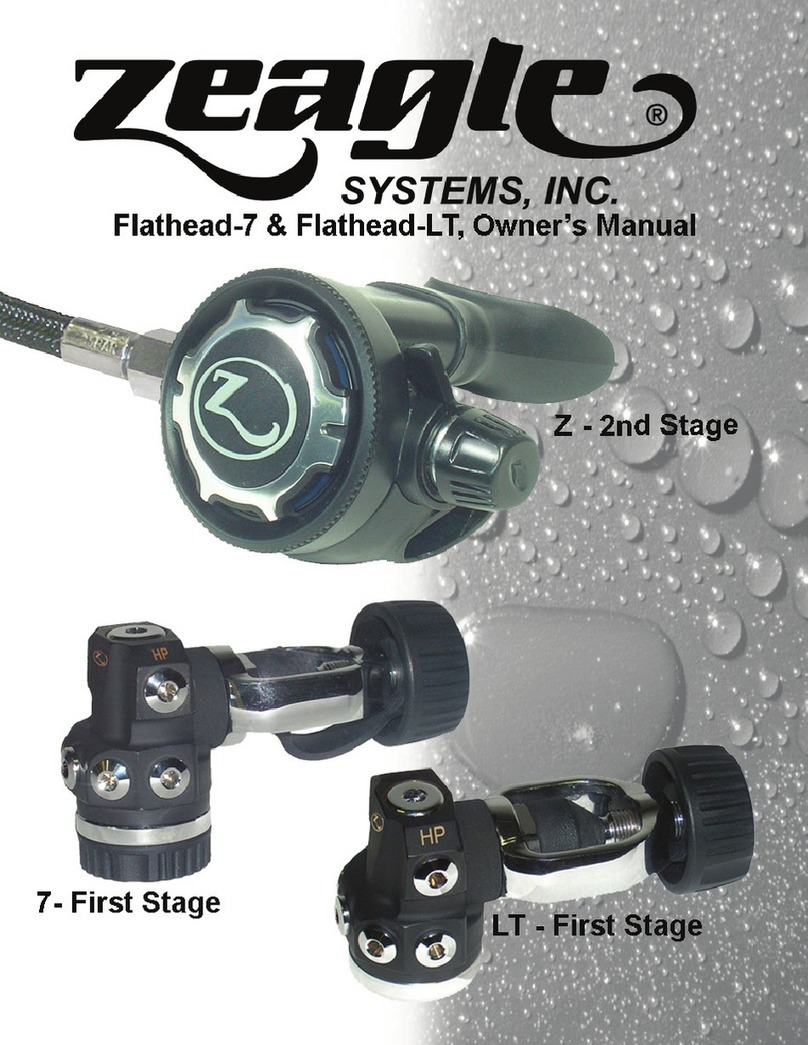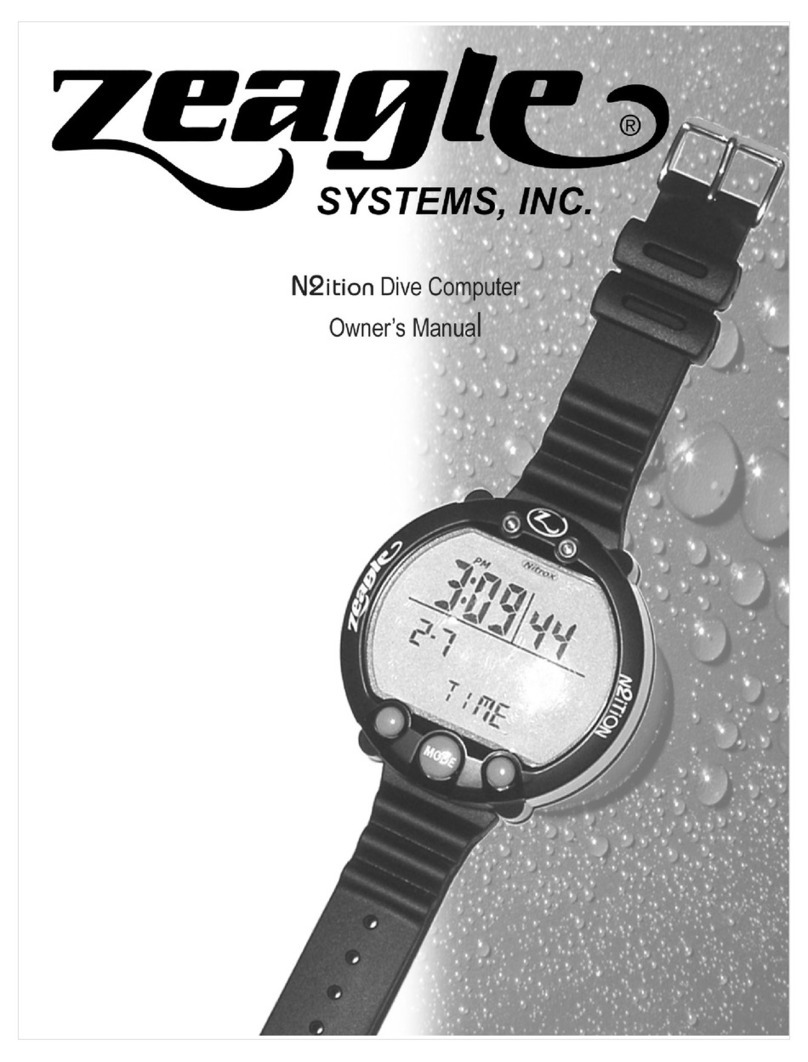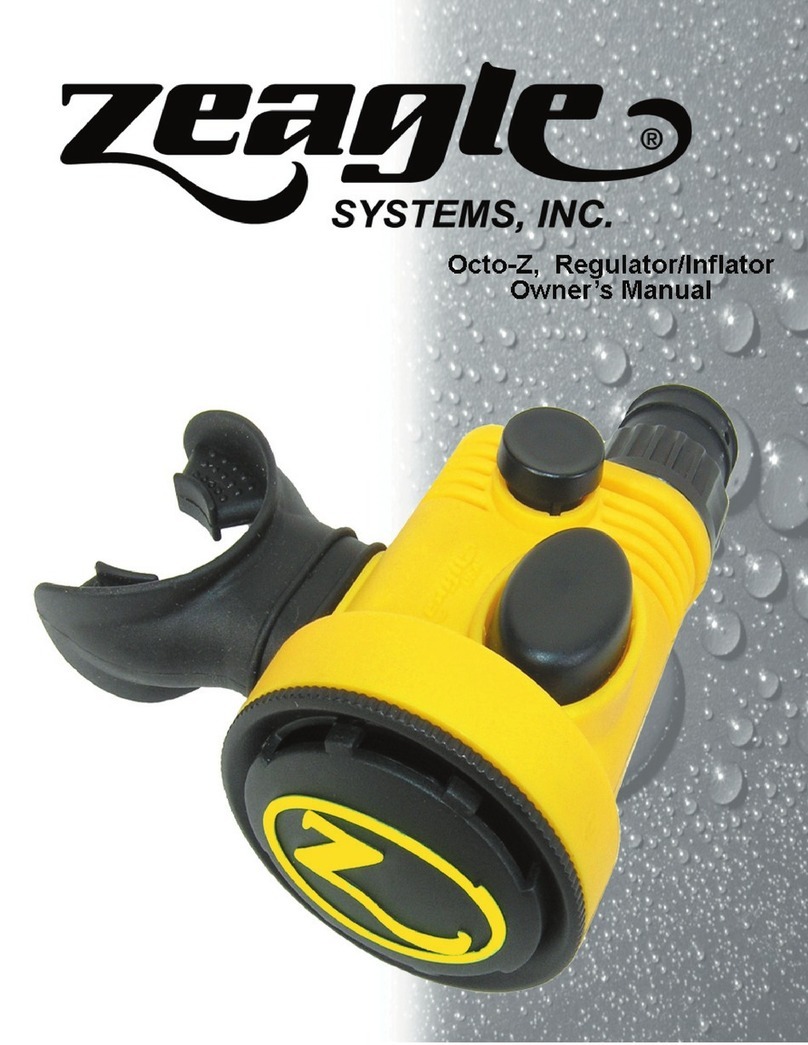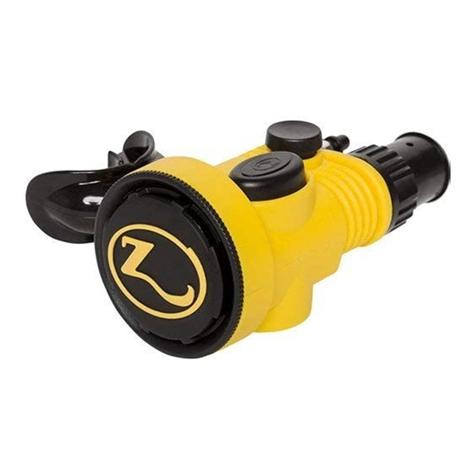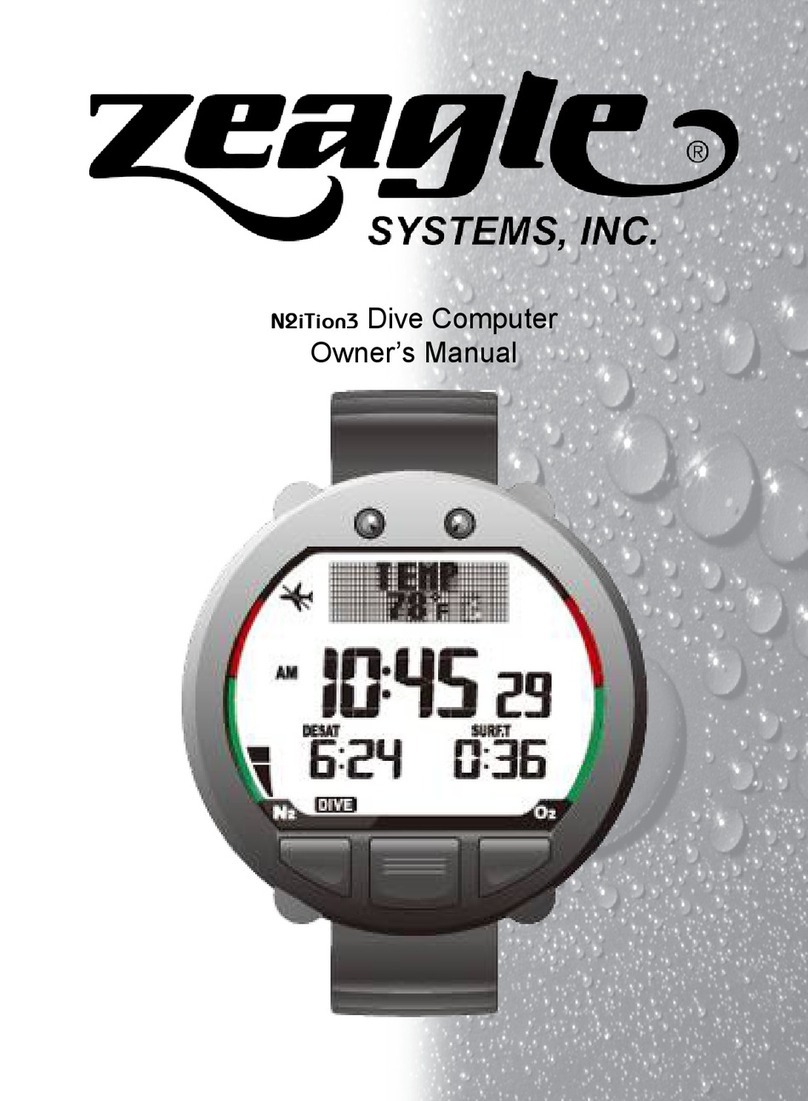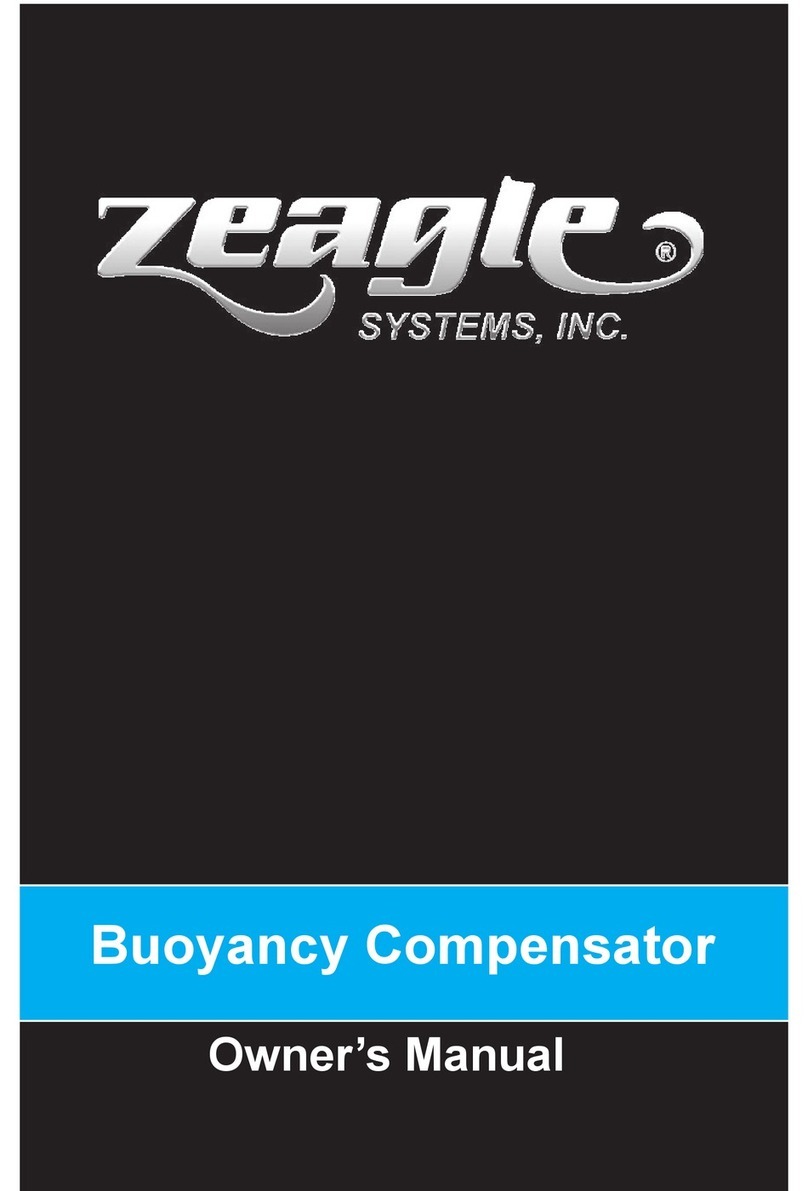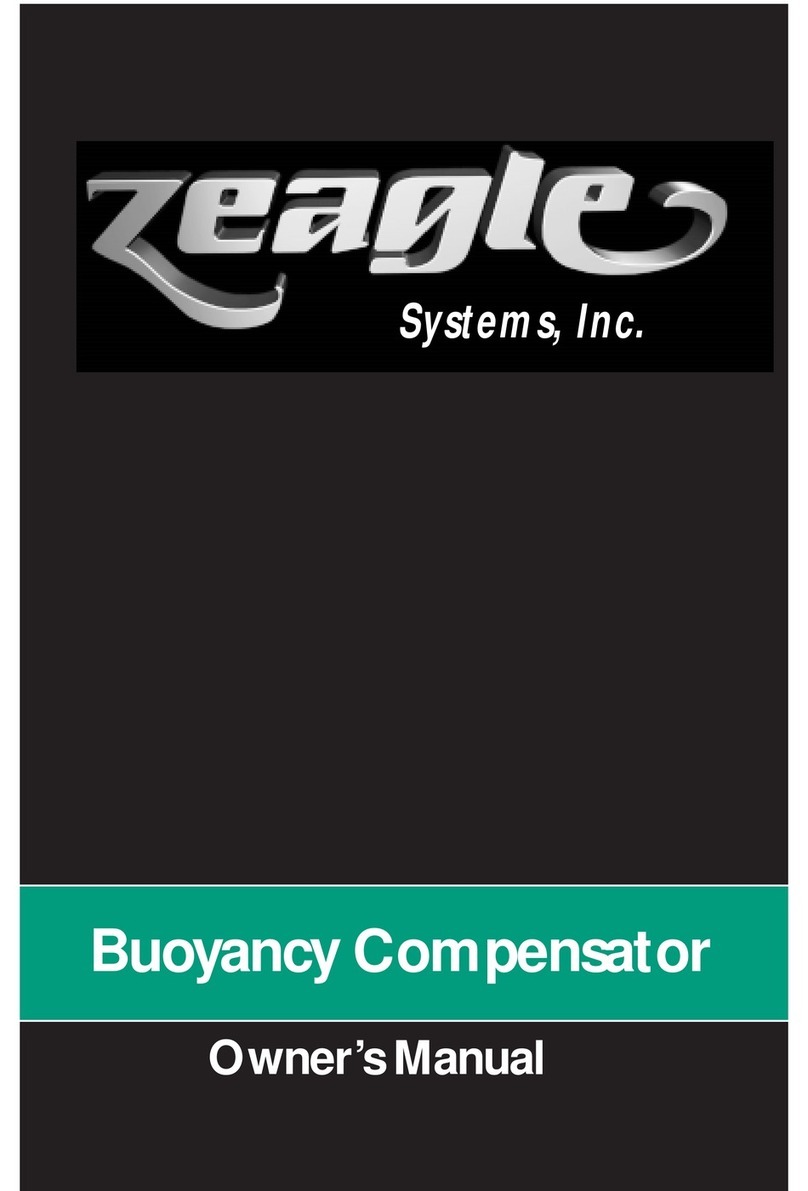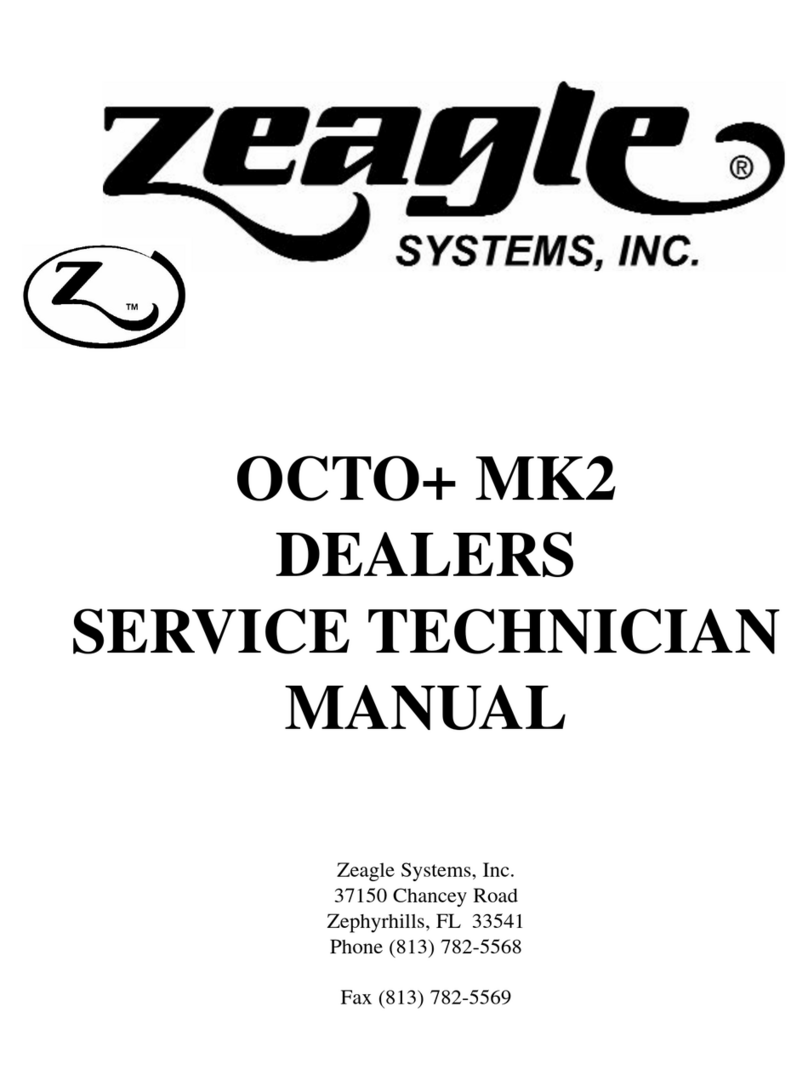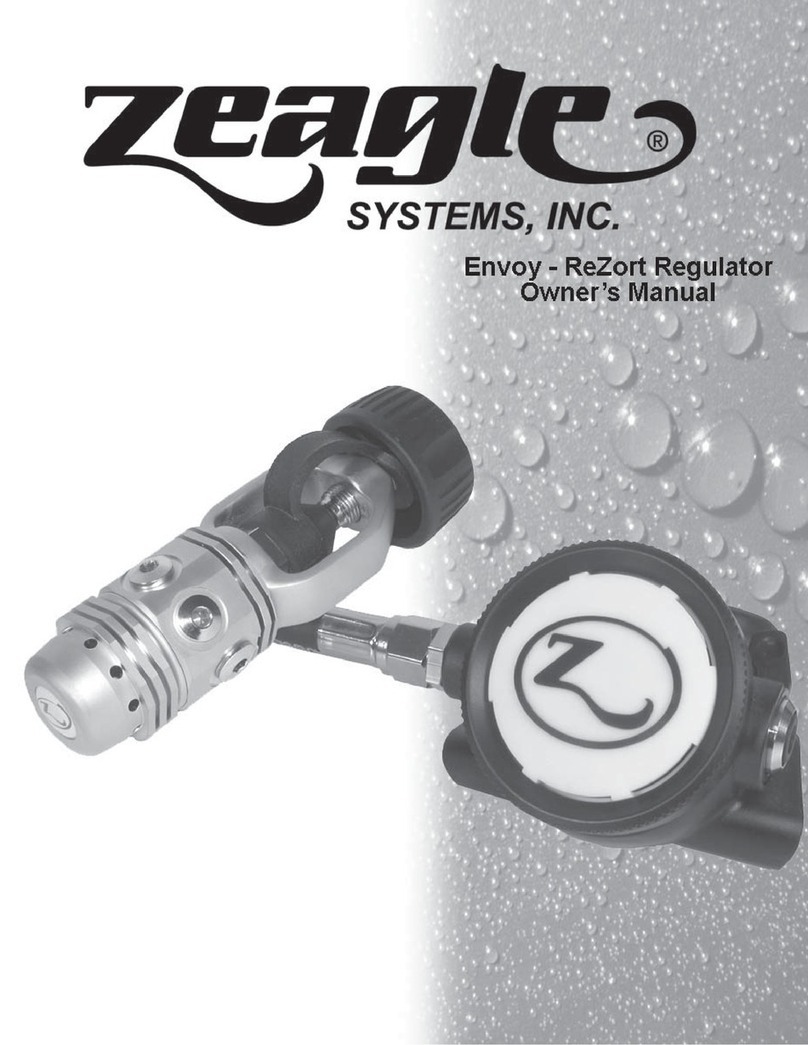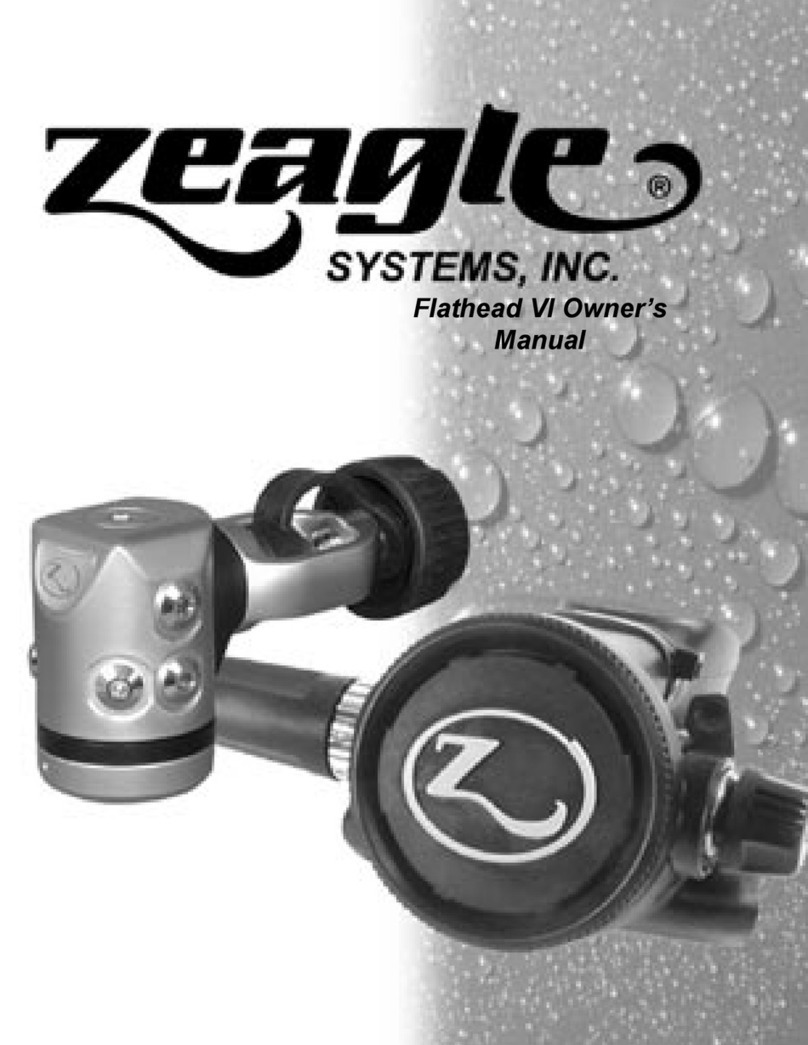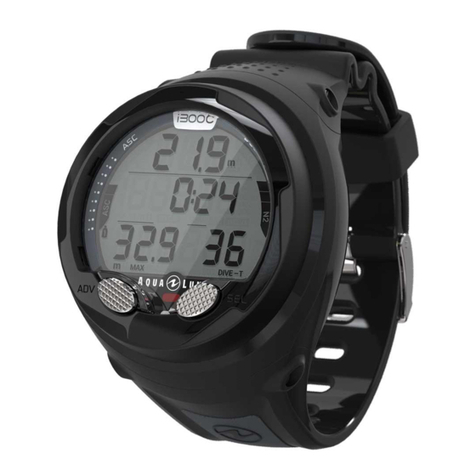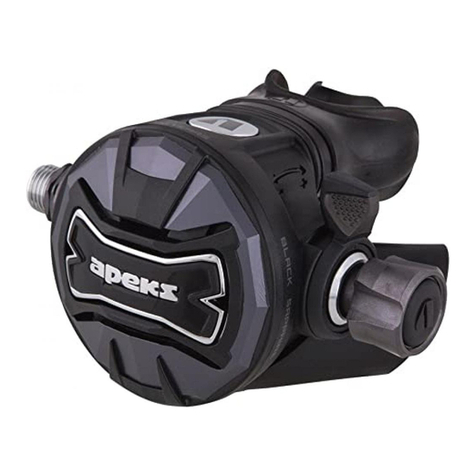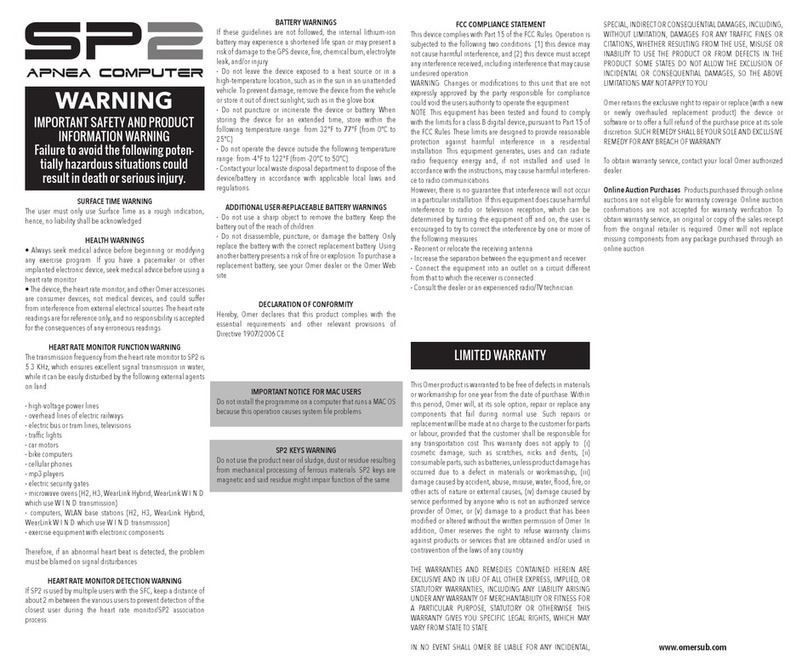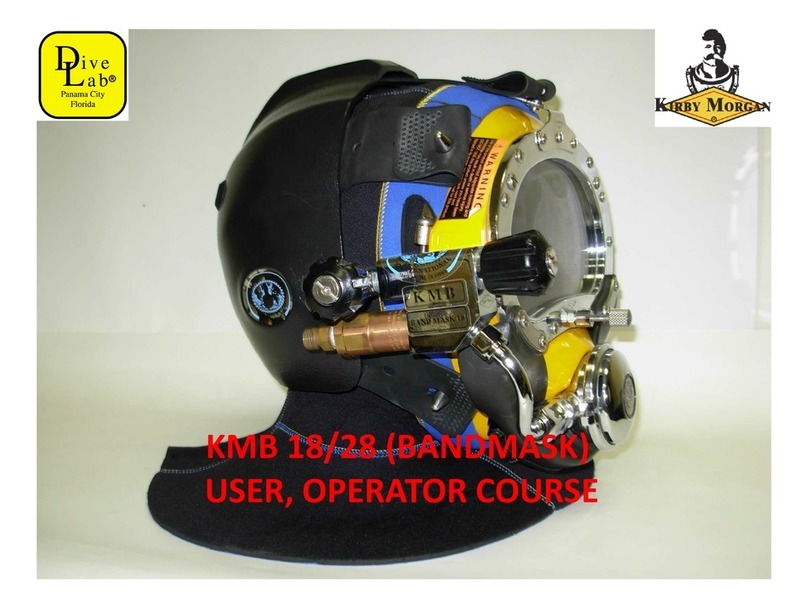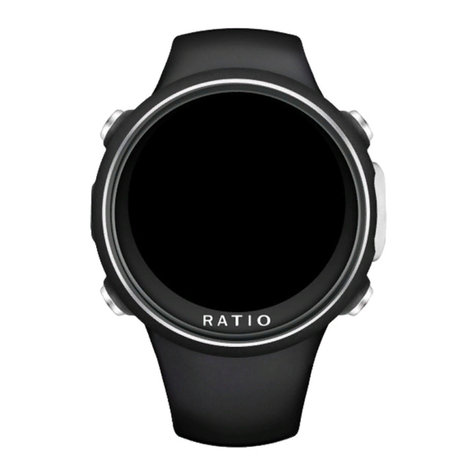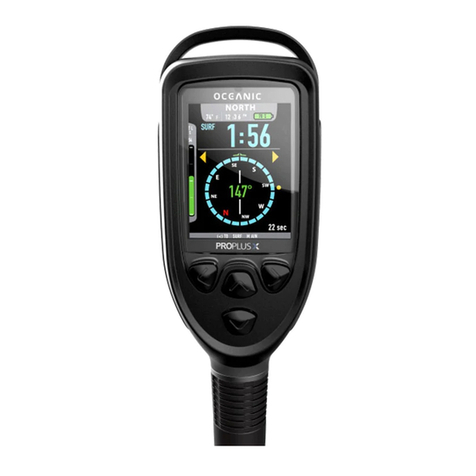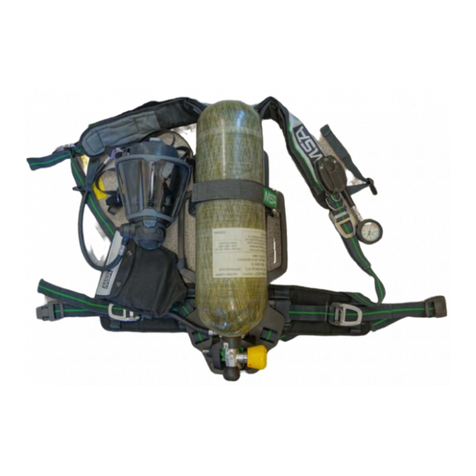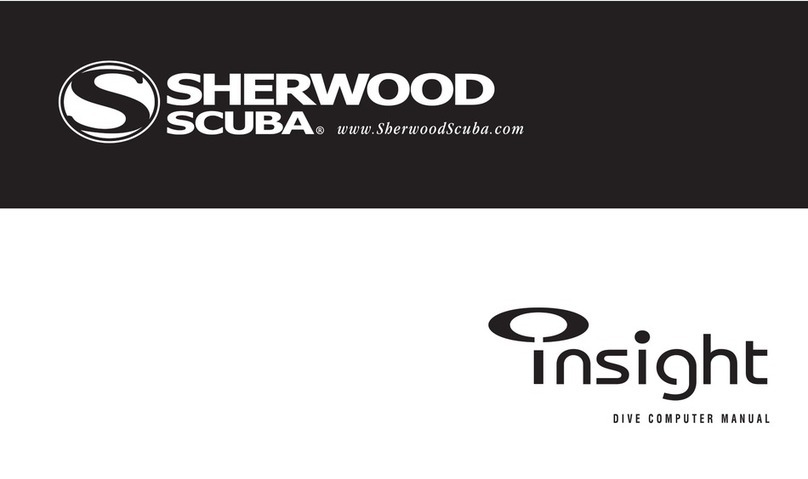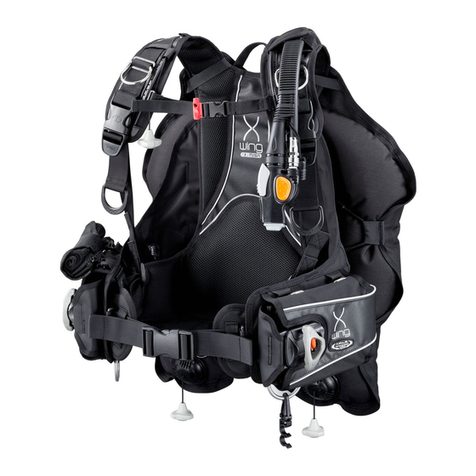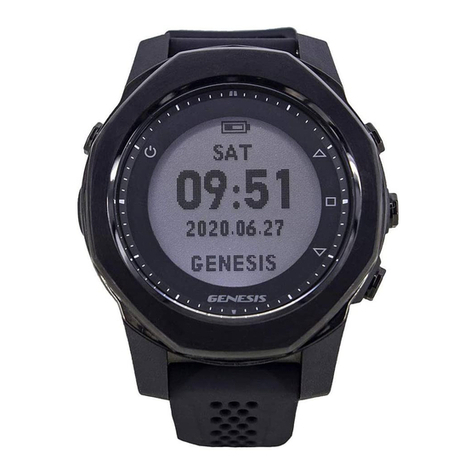4
CAUTION
1. The high-pressure outlets (HP Ports) are distinctly larger than the
low-pressure outlets. Only devices with fittings, hoses and compo-
nents designed for the full tank pressure that the regulator will be
subjected to, such as Pressure Gauges, are to be installed in these
ports.
2. During installation, the O-ring hose fittings will seal with hand-tight
pressure, but may come loose during use if not tightened carefully
with a small wrench. Proper torque for the hose fittings is 40-45
in lbs. (4.5 - 5 N-m) Excessive tightening will not help the seal and
may damage the parts (see Low Pressure Hose Installation Caution
Statement; ANSI American National Standard for Safety, paragraph
9.3.1).
WARNING
Extreme cold conditions such as those found under ice, requires special-
ized training and procedures. Do not attempt these activities unless you
are fully qualified and properly equipped to do so safely.
NITROX USE
SBA regulators are manufactured using materials suitable for use
with oxygen enriched gases (i.e., Nitrox, etc.) providing the oxygen
content does not exceed 40%. The regulator must be kept “Oxygen
Clean” and used only with certified clean air mixtures to maintain this
status. Once the regulator is used with air not certified to be clean
for enriched air use, the regulator will have to be cleaned again for
enriched air use by a certified technician.
